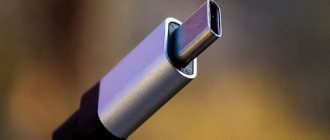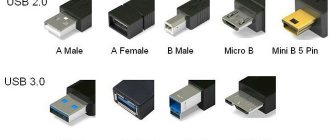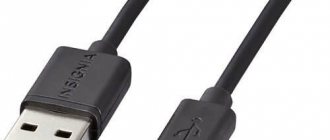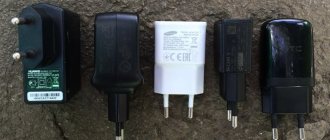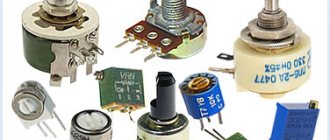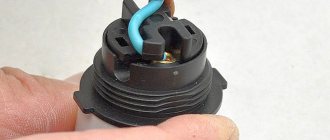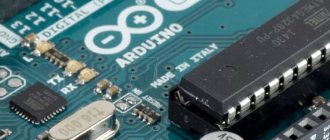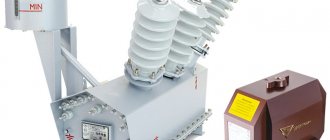Good day, Geektimes!
Has everyone already heard about USB Type-C? The one that's two-way, fast-fashionable, charges your new MacBook, makes your hair silky smooth, and promises to be the new standard for connectivity for the next ten years?
So, firstly, this is a connector type, not a new standard. The standard is called USB 3.1. Secondly, we need to talk specifically about the new USB standard, and Type-C is just a nice bonus. To understand what the difference is, what is behind USB 3.1 and what is behind Type C, how to charge an entire laptop using a USB cable, and what else can be done with the new USB Type-C:
Briefly about the main thing
USB as a standard appeared almost twenty years ago.
The first specifications for USB 1.0 appeared in 1994 and solved three key problems: unification of the connector through which equipment that expanded the functions of a PC was connected, simplicity for the user, and high speed data transfer to and from the device. Despite certain advantages of the USB connection over PS/2, COM and LPT ports, its popularity did not come immediately. USB experienced explosive growth at the beginning of the 2000s: first cameras, scanners and printers were connected to it, then flash drives.
In 2001, the first commercial implementations of the USB that is familiar and understandable to us appeared: version 2.0. We have been using it for the 14th year now and it is designed relatively simply.
USB cable wiring by color
The pinout of the USB connector differs in that the interface cables of version 2 use four wires (mini and micro versions - 5 wires), while in version 3 the number of wires is increased to nine.
Wiring the USB connector is made easier by the fact that the wires of the standard cable are assigned specific colors, shown in the table below.
| Wire number | USB2 | USB3 |
| 1 | red (plus power) | red (plus power) |
| 2 | white (data) | white (data) |
| 3 | green (data) | green (data) |
| 4 | black (zero power or common) | black (zero power or common) |
| 5 | – | blue (USB3 – transfer) |
| 6 | – | yellow (USB3 – transfer) |
| 7 | – | Earth |
| 8 | – | purple (USB3-receive) |
| 9 | – | orange (USB3 – reception) |
The fifth wire in mini and micro connectors of type B is not used, but in connectors of type A it is shorted to the GND wire.
The screen drain wire (if present) is not assigned a separate number.
A summary of the distribution of wires of USB interfaces version 2 across the pins of various types of plugs is shown in the figure below.
USB cable wiring by color
USB 2.0
Any USB cable version 2.0 and lower has 4 copper conductors inside. Two of them transmit power, the other two transmit data. USB cables (according to the standard) are strictly oriented: one end must connect to the host (that is, the system that will manage the connection) and it is called Type-A
, the other to the device, it is called
Type-B
. Of course, sometimes in devices (such as flash drives) there is no cable at all; the “to-host” connector is located directly on the board.
On the host side there is a special chip: a USB controller (in desktop computers it can be either part of the system logic or placed as an external chip). It is he who initializes the operation of the bus, determines the connection speed, the order and schedule of data packets, but these are all details. We are most interested in connectors and connectors of the classic USB format.
The most popular connector that everyone used was USB Type-A of the classic size: it is located on flash drives, USB modems, at the ends of the wires of mice and keyboards. Full-size USB Type-B is a little less common: printers and scanners are usually connected with this cable. The mini version of USB Type-B is still often used in card readers, digital cameras, and USB hubs. Through the efforts of European standardizers, the micro version of Type-B has become de facto the most popular connector in the world: all current mobile phones, smartphones and tablets (except for the products of one fruit company) are produced with the USB Type-B Micro connector.
Well, probably no one has really seen USB Type-A micro and mini formats. Personally, off the top of my head I can’t name a single device with such connectors. Even the photographs had to be taken from Wikipedia:
Hidden text
Type-A mini:
Type-A micro:
All these connectors have one simple thing in common: inside there are four contact pads that provide the connected device with both power and communication:
| Contact number | 4 | 3 | 2 | 1 |
| Designation | GND | D+ | D- | VBUS |
| Wire color | Black | Green | White | Red |
With USB 2.0 everything is more or less clear. The problem with the standard was that two conductors were not enough to transmit data, and the specifications developed in the middle of the first decade did not provide for the transmission of large currents through power circuits. External hard drives suffered the most from such limitations.
Features of USB connectors
In total, three main versions of USB interfaces were standardized. Each new one provided an increase in the speed of information volume and increased functionality. At the same time, taking into account the expansion of application areas, the form factor of the plugs changed.
The ability to connect a cable to a device automatically means that the connected devices are compatible with each other.
USB cable plugs come in full, mini and micro form factors. A type A plug is always included in the central device; a type B plug is intended for servicing the peripheral device. In addition, plugs are divided into type M (from the English male - plug) and F (from the English female - socket).
USB 3.0
To improve the characteristics of the standard, a new USB 3.0 specification was developed, which contained the following key differences:
- Five additional contacts, four of which provide additional communication lines;
- Increase in maximum throughput from 480 Mbit/s to 5 Gbit/s;
- Increasing the maximum current from 500 mA to 900 mA.
In addition, 4 more connectors have appeared that are electrically and mechanically compatible with USB Type-A version 2.0. They allowed both USB 2.0 devices to be connected to 3.0 hosts, and 3.0 devices to 2.0 hosts or via a 2.0 cable, but with limitations in power supply and data transfer speed.
So how can you tell the difference between USB 3.0 and USB 2.0? Well, everyone already knows that USB 3.0 is faster, but few people know how to distinguish a fake from a real one or how they differ in general.
First, let's look at our first USB, the so-called 1.0 usb, they are used even in new mice, webcams, and all those devices for which the first USB is enough:
As you can see, they have 4 contacts inside and the plastic underneath is white. This is an easy way to determine that this is the 1st usb.
Now let's look at the 2nd one:
Here, of course, it is difficult to see and understand that there are 4 contacts and black plastic underneath them - this is a clear sign of usb 2.0. As we already know, 2.0 and 1.0 are compatible, the only differences are in speed: 2.0 is faster in speed, but it’s not the flash drive that reads faster, it’s the controller through which communication takes place that works faster. Of course, on usb 2.0 they usually indicate that this is the 2nd usb, but there are all sorts of cases.
Let's see what the USB 2.0 connector looks like:
As you can see, it is also black, although in rare cases manufacturers change this color intentionally (design), but the correct color should be black for 2.0 usb.
And now, finally, let's look at 3.0:
This is the most successful photo of all the ones I took; there are nine contacts on USB 3.0: 4 in front and 5 in the back (they are slightly raised higher):
And as you can see, the plastic under the contacts is blue - this is a clear sign of 3.0: after all, they should make it blue everywhere.
Here is the usb 3.0 connector:
The inscription SS indicates that the controller is made for Super Speed, that is, the maximum possible speed. This can also be seen on external 3.0 hard drives. If both the external connector is SS and the connector is SS, then there will be a maximum data transfer rate.
So, the problem is how to distinguish if the design is, for example, blue, like here:
The plastic here is blue, but it is USB 2.0. So how to differentiate? - according to contacts, I said that the third one has nine contacts, and the second one has four:
Here it is in analysis, and here you can clearly see that there are only 4 contacts.
USB 3.0 is compatible with 2.0 and 1.0, so you can plug both 2.0 and 1.0 into 3.0 connectors. If you insert 2.0 into the third USB connector, then the speed will be 2.0, if 1.0, then the speed will be 1.0. So don't be afraid to put others in there as well. Just when you need speed and you have a 3.0 device, insert it into 3.0. USB 3.0 has an internal connector that supports transfer speeds of up to 5 Gbps.
Recently, the so-called USB 3.1 entered the market; it is designated as SS (Super Speed) for each of the connectors. It is faster than USB 3.0 and is compatible with USB 2 and 1. USB 3.1 is either black or blue (as in my case the color), and 3.0 is only blue .
USB 3.1
Since the fall of 2013, specifications for the updated USB 3.1 standard have been adopted, which brought us a Type-C
, transmission of up to 100 W of power and doubling the data transfer speed compared to USB 3.0. However, it is worth noting that all three innovations are just parts of one new standard, which can be applied all together (and then the device or cable will receive USB 3.1 certification) or separately. For example, technically, inside a Type-C cable, you can organize at least USB 2.0 on four wires and two pairs of contacts. By the way, Nokia pulled off such a “feint”: its Nokia N1 tablet has a USB Type-C connector, but inside it uses regular USB 2.0: with all the limitations on power supply and data transfer speed.
Types of USB connectors
There are also different versions of USB connectors. Below I will describe the most common options.
USB 2.0, type A
The most widespread option that can be found in almost any PC user. It is wear-resistant, has a high safety margin, can withstand a huge number of connections, and is “foolproof” (you won’t be able to plug it in with the back side). At the same time, it is usually not used in portable equipment, as it has impressive dimensions for these devices.
Popular USB 2.0 type A
USB 2.0 Type B
Usually has a trapezoidal (or square) shape. It is also quite large in size, which is why it is used in relatively large peripheral devices (scanners, printers, etc.).
Mini USB 2.0 (type B modification)
Having reduced dimensions (compared to the connectors listed above), it is used mainly in portable equipment (for example, in players, portable hard drives, card readers, etc.). It has 5 contacts, not 4 like a classic USB, while 1 contact is not used.
The disadvantages include susceptibility to destruction (with active use of the connector, the latter regularly fails).
Micro USB 2.0 (type B modification)
Improved appearance of the Mini USB connector. It has minimal dimensions and is perfect for a range of small devices - from mobile phones and tablets to digital cameras. At the same time, it guarantees excellent contact, is wear-resistant, and has good prospects of becoming a universal type of connector for the vast majority of electronic devices.
It is quite simple to distinguish Micro USB (the connector in question) from Mini USB. Micro USB has two latches on the back side, which the Mini USB connector lacks.
USB 3.0 (type A)
The modern USB 3.0 A standard, due to its higher operating speed, is actively used in laptops and desktop computers of the latest generation.
USB 3.0 (Type B)
Cables and devices of this version can no longer be connected to a standard USB 2.0 connector. This type of connector is used when operating devices with high performance.
Micro USB 3.0
It is used for high-speed SSD drives, external high-speed drives, and provides very high-quality connections.
USB 3.1, Type-C and power
USB PD
standard is responsible for the ability to transfer truly serious power . According to the specifications, to be certified as USB PD, the device and cable must be able to transmit current with a power of up to 100 Watts, both in both directions (both to and from the host). In this case, the transmission of electricity should not interfere with the transmission of data.
There are currently only two laptops that fully support USB Power Delivery: the new MacBook and the Chromebook Pixel.
Well, then, who knows, maybe we’ll install sockets like this at home?
USB Type-C and backward compatibility
USB as a standard is strong in its backward compatibility.
Find an ancient 16 megabyte flash drive that only supports USB 1.1, insert it into a 3.0 port and go. Connect a modern HDD to a USB 2.0 connector, and if it has enough power, everything will start, the speed will just be limited. And if that’s not enough, there are special adapters: they use the power circuit of another USB port. The speed will not increase, but the HDD will work. It’s the same story with USB 3.1 and the Type-C connector, with only one amendment: the new connector is geometrically in no way compatible with the old ones. However, manufacturers have actively begun producing both Type-A <=> Type-C wires, as well as all kinds of adapters, adapters and splitters.
How to determine the type of USB port by appearance?
Let's start with the very first version - USB 1.0, now this option is practically not used in laptops, but it does exist in some mice and other devices. It looks like this: a white port with 4 pins - this is USB 1.0.
USB 2.0 is usually painted black and also has 4 pins inside. The second type is compatible with USB 1.0, but differs only in bandwidth. The second type is faster.
In this example, we looked at a flash drive, but what does the connector look like, for example, in a laptop? This is what it looks like:
Almost no different. An important point is that some manufacturers can paint the same USB 2.0 in a different color, for example, orange. Of course, this does not affect the interface characteristics in any way.
What's on USB Type-C now?
Since the technology is young, there are very few devices with USB 3.1.
There are slightly more devices with a USB Type-C cable/connector, but still not enough for Type-C to become as common and natural as Micro-B, which any smartphone user has. On Type-C personal computers, you can expect it already in 2016, but some manufacturers have taken and updated the line of existing motherboards. For example, USB Type-C with full USB 3.1 support is available on the MSI Z97A Gaming 6 motherboard.
ASUS is not far behind: ASUS X99-A and ASUS Z97-A motherboards support USB 3.1, but, unfortunately, do not have Type-C connectors. In addition, special expansion cards have been announced for those who do not want to either upgrade the motherboard or give up a pair of USB 3.1 ports.
SanDisk recently introduced a 32 GB flash drive with two connectors: classic USB Type-A and USB Type-C:
Of course, don’t forget about the recent MacBook with passive cooling and only one USB Type-C connector. We’ll talk about its performance and other delights sometime separately, but about the connector today. Apple abandoned both its “magic” MagSafe charging and other connectors on the case, leaving one port for power, connecting peripherals and external displays. Of course, if one connector is not enough for you, you can buy an official adapter-splitter to HDMI, a classic USB and a power connector (the same Type-C) for... $80. We can only hope that Type-C will come to Apple mobile devices (and this will be the end of the zoo with wires for smartphones), although the chances of such an update are minimal: was it in vain that Lightning was developed and patented?
We’ll talk about its performance and other delights sometime separately, but about the connector today. Apple abandoned both its “magic” MagSafe charging and other connectors on the case, leaving one port for power, connecting peripherals and external displays. Of course, if one connector is not enough for you, you can buy an official adapter-splitter to HDMI, a classic USB and a power connector (the same Type-C) for... $80. We can only hope that Type-C will come to Apple mobile devices (and this will be the end of the zoo with wires for smartphones), although the chances of such an update are minimal: was it in vain that Lightning was developed and patented?
One of the peripheral manufacturers, LaCie, has already released a stylish external drive with support for USB 3.1 Type-C for the new MacBook. Its price, however, is absolutely Apple, but what can you do - you have to pay for new technologies and the PORSCHE DESIGN inscription.
In addition to Apple, Google is also flirting with USB 3.1 Type-C: the new ChromeBook Pixel, in addition to interesting characteristics, also received a corresponding port.
And, of course, don’t forget about the device from Nokia. Their N1 tablet was one of the first to receive a Type-C connector, although without support for USB 3.1 functions.
Results
USB 3.1 will finally become the “king” of connectors.
You can use it to connect almost anything: an external drive, a display, peripherals, a power adapter, and even an array of SSD drives. Bandwidth and 100 W of transmitted power are a serious claim to success. Imagine the world in 5 years? No matter where you go, there is a charger, and the connector fits, and you don’t need to ask. It’s easy to connect a camera, a telephone, and in general everything, everything, everything... And only in the accounting department they used floppy disks and will continue to use them.
Our previous reviews: » Two months with LG G Watch R » The evolution of Razer mice using the example of DeathAdder and Naga » Studying Philips' TV flagship: Part 1 | Part 2
Thank you for your attention!

